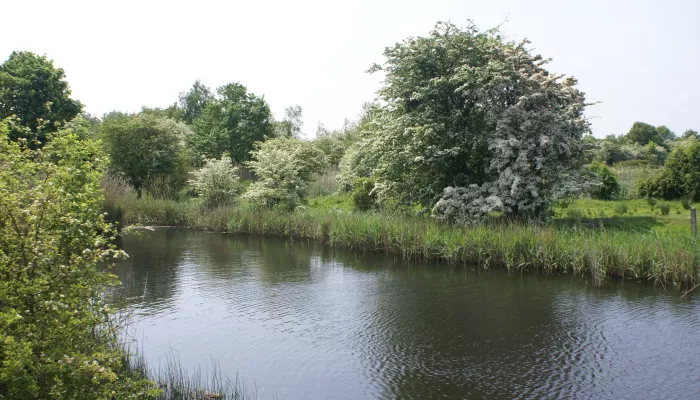About the reserve
In the winter months when the sun glints off the flooded fields, the chittering of teal can be the first sound to alert you to the presence of the wildfowl taking advantage of the grazing marsh. Amongst the teal, other ducks such as mallards, gadwall and shoveller can be seen. The dazzling white little egret stalks through the water searching for prey, while its larger cousin the grey heron prefers to stand and wait in the deeper ditches.
In the spring when the fields start to dry out the calls of returning summer visits can be heard. The most evocative of those is the nightingale’s melodious song which has inspired people throughout the centuries. In the summer the fields buzz with the bright blues, yellows and reds of emperor dragonflies, 4-spot chasers and ruddy darters. If you are lucky, you may glimpse the metallic green and bronze of banded and beautiful demoiselles, our largest damselflies. Early and southern marsh orchids put on a fine display in the fen fields alongside ragged robin, meadow sweat and knapweeds. One of the most fascinating plants is the aquatic bladderwort, which for most of the year it is hidden below the water where it traps tiny invertebrates in its bladder like traps.
In August it puts up large, bright yellow flowers which give away it location in the ditches. Water voles also use these ditches as their homes and there are a thriving population of these shy mammals at Holborough. In the autumn, the large reedbed sandwiched between the grazing marsh and river provides excellent roasting cover for swallows and martins as they start their migration back to sunnier climes. The tall reed also provides over winter food for small flocks of bearded tits that flit between the network of reedbeds along the Medway.
Holborough marshes is owned by Tarmac and for the past 25 years there has been a successful partnership in which Tarmac has supported the work of Kent Wildlife Trust in managing the reserve.
Contact Us
If you need to get in touch regarding Holborough Marshes, for any reason, please contact:
Rosemary Holden
Contact number: 01622 662012
Contact email: rosemary.holden@kentwildlife.org.uk
Environmental designation
- Site of Special Scientific Interest (SSSI)

